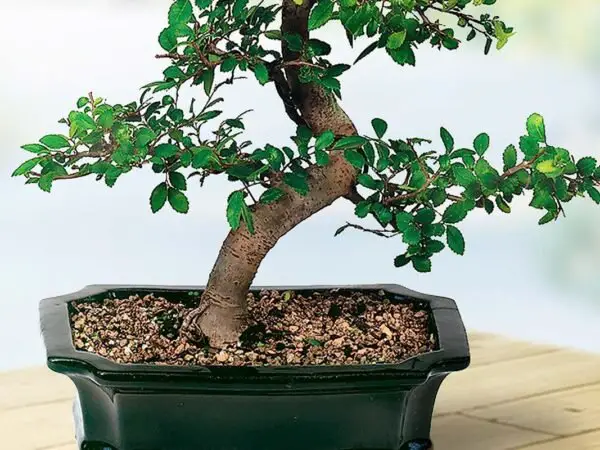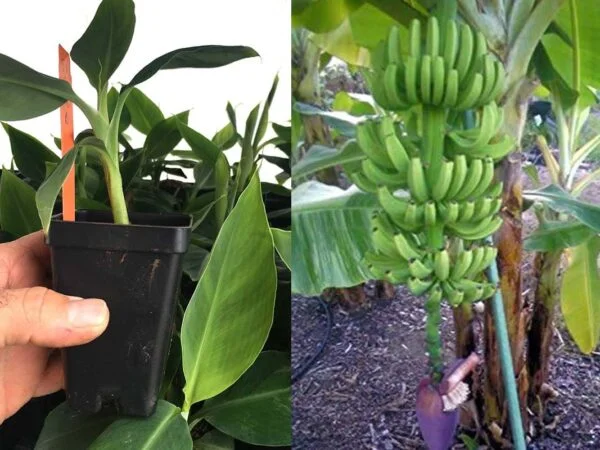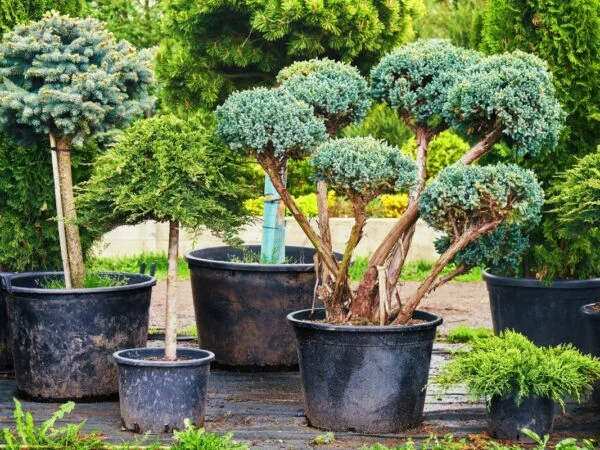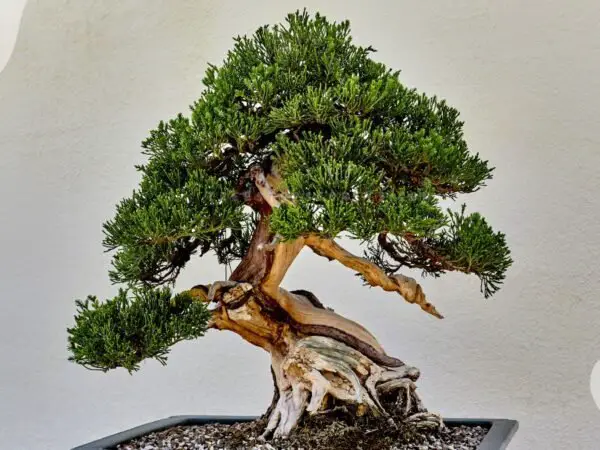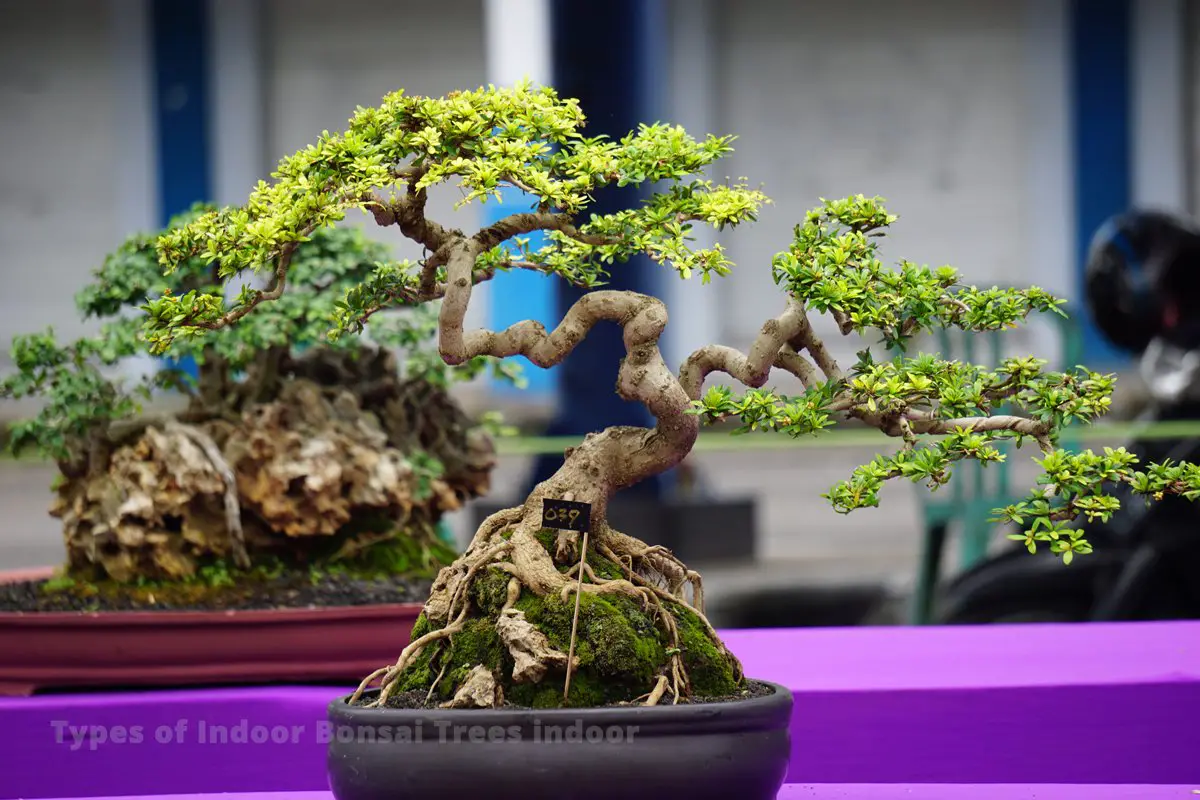
Bonsai trees have a rich history dating back to ancient China and Japan, where they were admired for their miniature beauty and symbolism. Today, these captivating miniature trees are not only an art form but also a popular choice for indoor decoration. Whether you're new to the world of bonsai or a seasoned enthusiast, understanding the different types suitable for indoor environments is essential. From the elegant Ficus Retusa to the charming Chinese Elm, there's a diverse range of options that thrive in indoor settings.
Bonsai Basics
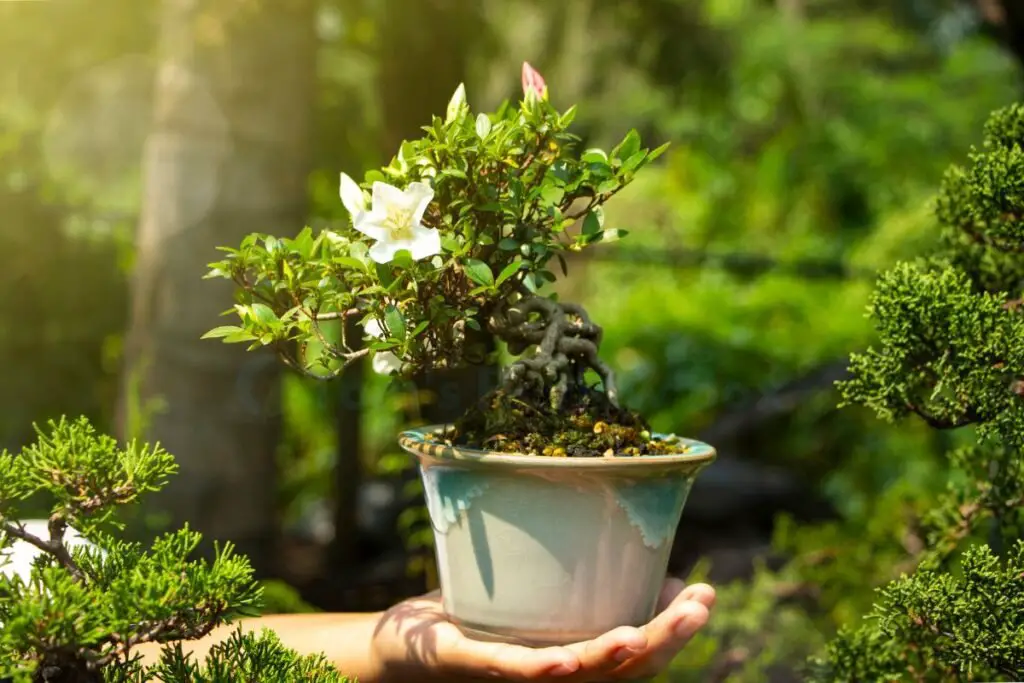
Indoor Adaptability
Bonsai trees are a captivating art form with a rich history rooted in Japanese culture. These miniaturized trees are carefully cultivated and pruned to thrive in containers, making them perfect for indoor environments. The adaptability of bonsai trees allows enthusiasts to bring the beauty of nature into their homes or offices.
Indoor settings provide a suitable environment for certain types of bonsai trees, as they can thrive with proper care and attention. One key aspect that makes bonsai trees well-suited for indoor spaces is their ability to develop aerial roots, which enable them to absorb nutrients and moisture from the air when grown indoors.
Beginner Considerations
For beginners interested in cultivating bonsai trees, starting with indoor varieties is often recommended due to their adaptability to limited space and controlled environments. When selecting a type of bonsai tree for indoor growth, it's essential to consider factors such as lighting requirements and care needs.
Proper lighting is crucial for the successful growth of indoor bonsai trees. Different species have varying light preferences - while some may require direct sunlight, others thrive in partially shaded areas. Understanding these requirements will help ensure the health and vitality of the chosen bonsai specimens.
In addition to lighting considerations, providing adequate care such as regular watering, pruning, and fertilizing is essential for maintaining healthy indoor bonsais. Beginners should also take into account the specific needs of each tree species when creating an optimal growing environment indoors.
Ideal Indoor Bonsai Types
Ficus Bonsai
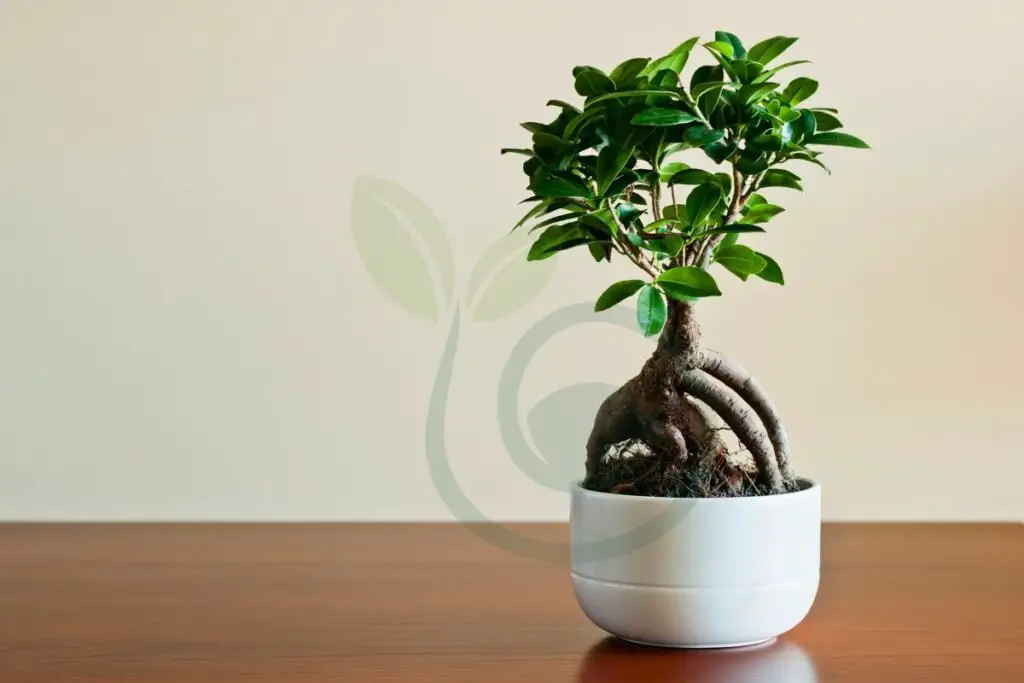
Ficus bonsai is an ideal choice for beginners venturing into the world of indoor bonsai trees. These plants are known for being low maintenance, making them perfect for those new to bonsai care. However, cultivating a thriving ficus bonsai requires patience and dedication. They respond well to regular watering, but overwatering should be avoided as it can lead to root rot. They thrive in bright, indirect light and need protection from drafts.
A key advantage of the ficus bonsai is its adaptability to different environments and conditions, making it a versatile option for various living spaces. It's important to note that while ficus bonsais are generally hardy plants, they can be sensitive to changes in their environment or care routine.
Jade Plant
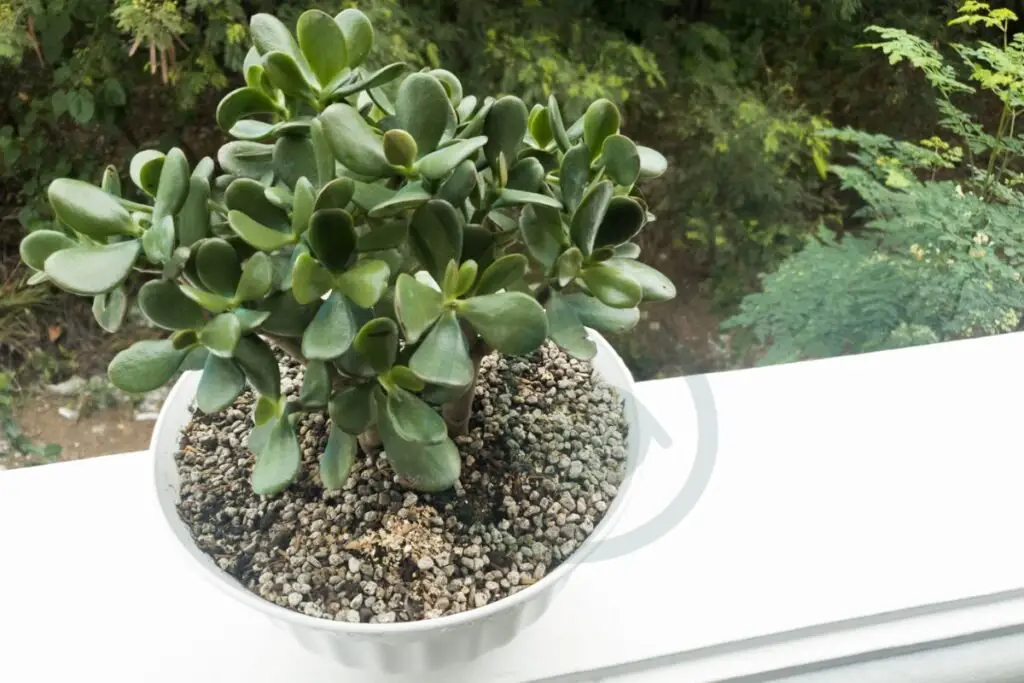
The jade plant is another popular choice for indoor bonsai enthusiasts due to its ability to tolerate indoor conditions exceptionally well. Its thick trunk and dense branches give it an elegant appearance that makes it a favorite among many growers.
One drawback of jade plants is their tendency to lose leaves when exposed to sudden changes in light or temperature. This means that consistent care and attention are necessary when growing this type of indoor bonsai tree.
Chinese Elm
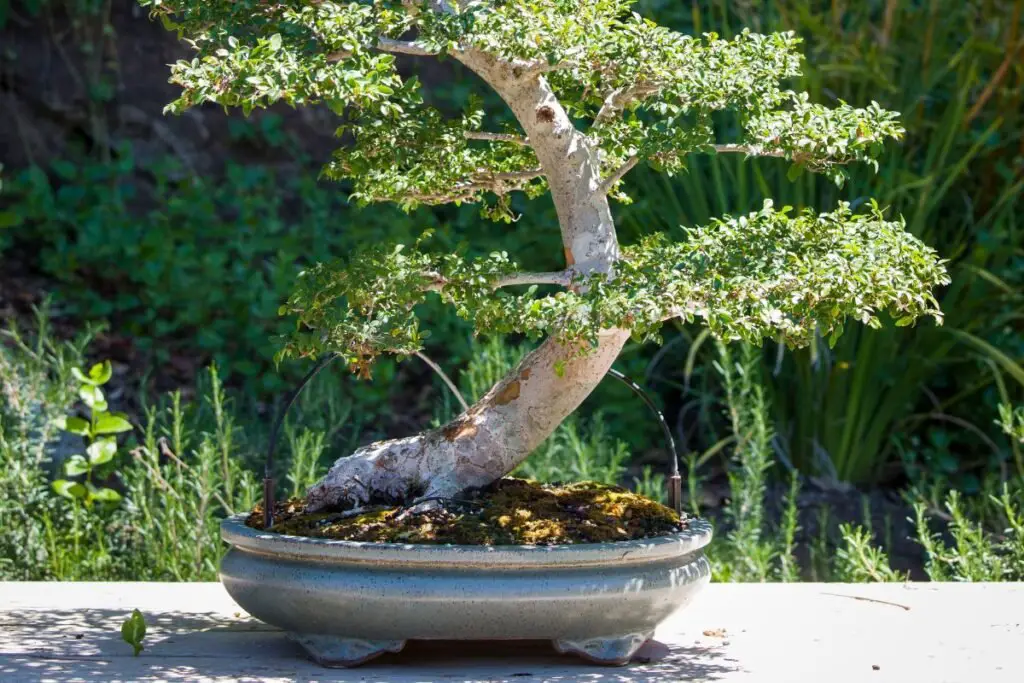
Chinese elm stands out as an excellent option for individuals seeking resilient and easy-to-care-for indoor bonsais with a touch of symbolism attached. With its succulent nature characterized by thick, fleshy leaves, the Chinese elm symbolizes good luck and prosperity according to traditional beliefs.
These trees have earned a reputation for being sturdy and adaptable while requiring minimal effort on the part of growers. Their resilience makes them suitable even for beginners who may still be honing their skills in tending these miniature marvels.
Dwarf Schefflera
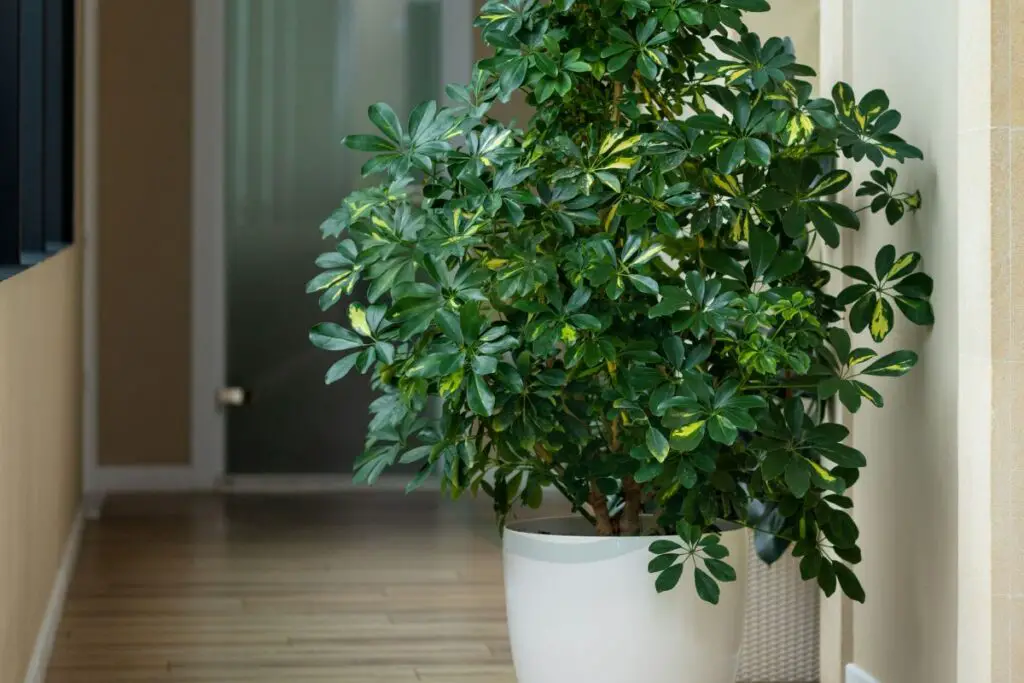
The dwarf schefflera presents itself as another fantastic choice tailored especially towards beginners eager to explore the realm of indoor gardening with small-sized glossy green leaves adding charm wherever they're placed within homes or offices alike.
What sets this variety apart is its versatility; not only does it flourish indoors but also outdoors if desired by gardeners looking forward to experimenting with outdoor cultivation options.
Aesthetics and Styles
Formal Upright
The formal upright bonsai tree is a type that suits indoor environments. These trees, often tropical plants, can thrive in low light conditions. Regular pruning is necessary to maintain their desired shape and aesthetic appeal.
For instance, a ficus or Chinese elm are common examples of formal upright bonsai trees suitable for indoor cultivation. Their ability to tolerate low light makes them perfect for adorning indoor spaces with their elegant appearance.
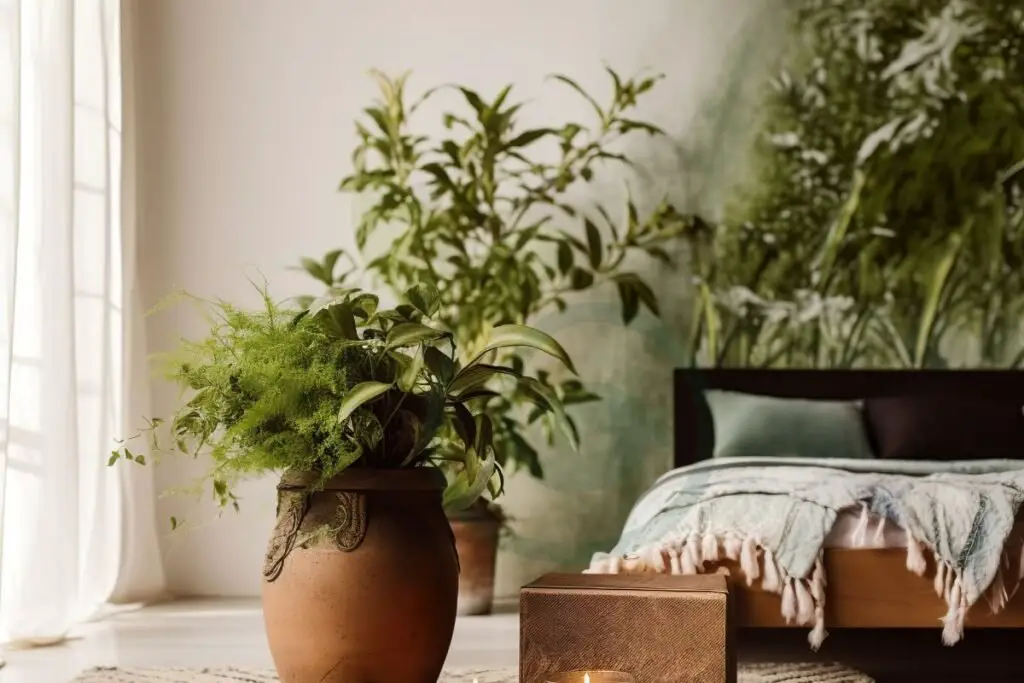
Another example of a formal upright bonsai tree is the Fukien tea tree. It's known for its glossy leaves and small white flowers, making it an excellent choice for indoor settings due to its adaptability to lower light conditions.
Informal Upright
The informal upright style features a classic vertical trunk design that conveys strength and stability. These trees require careful training and maintenance to achieve their characteristic appearance over time.
A juniper or pine tree can be shaped into an informal upright bonsai with proper care and attention. The inherent strength represented by these trees' vertical trunks adds an air of timeless elegance to any indoor space.
Another great example of an informal upright bonsai suitable for indoors is the Japanese black pine. Its striking appearance with dark green needles creates a captivating focal point in any room when cultivated as a bonsai.
Slanting Style
The slanting style showcases natural, slightly curved trunks that represent resilience and flexibility. This style aims to emulate the look of trees shaped by wind or other elements in nature, adding character and charm to indoor settings.
Bonsai varieties like the juniper or maple lend themselves well to being styled into slanting designs, bringing the beauty of nature indoors while symbolizing perseverance through challenges.
An additional example would be the Chinese elm which can also be trained into this slanted style, offering an attractive representation of endurance within limited spaces such as homes or offices.
Cascade Style
The cascade style presents dramatic angled trunk designs that evoke movement and vitality within confined spaces like homes or offices where they are commonly grown.
One popular option suited for indoor cultivation is the weeping fig which perfectly embodies this cascade style with its gracefully arching branches cascading down from its container.
By showcasing various styles such as formal upright, informal upright, slanting, and cascade styles among others; enthusiasts have ample choices when selecting types of bonsai
Best Bonsai Trees for Indoors
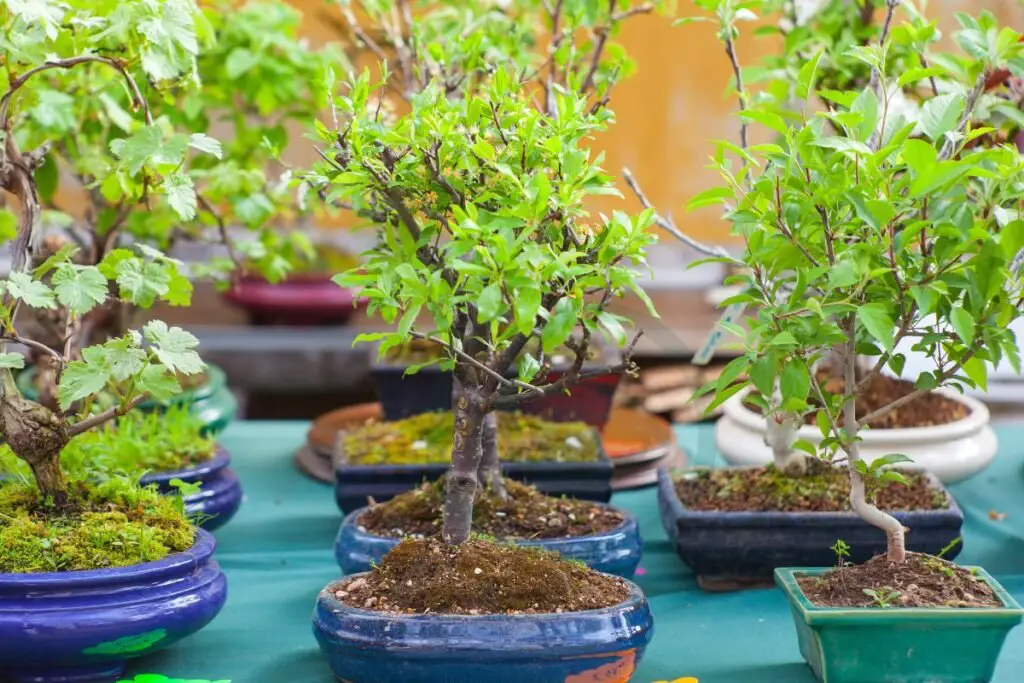
When it comes to choosing the best bonsai trees for indoors, there are a few options that thrive in indoor environments. Here's a comparison table to help you decide:
| Bonsai Tree Type | Features | Pros | Cons |
|---|---|---|---|
| Ficus | - Small leaves - Tolerant of low light | - Easy to care for - Can thrive in low light conditions | - Susceptible to pests if not properly cared for |
| Jade | - Thick trunk - Resilient to neglect | - Unique appearance - Can go without water for long periods | - Prone to overwatering |
| Chinese Elm | - Small leaves - Flexible in styling | - Easy to train and shape - Can tolerate indoor conditions well | - Requires regular pruning |
Examples of the best bonsai trees for indoors include the Ficus, Jade, and Chinese Elm. These trees are well-suited for indoor environments and offer unique features that make them ideal for bonsai enthusiasts.
If you're considering bringing a bonsai tree indoors, here are some steps to help you choose the best one for your space:
- Assess the lighting conditions in your home to determine which bonsai tree would thrive best.
- Consider the maintenance level you're comfortable with, as some trees require more care than others.
- Research the specific needs of each type of bonsai tree to ensure it aligns with your capabilities and preferences.
By following these steps and considering the features, pros, and cons of each type of bonsai tree, you can make an informed decision on the best one for your indoor space.
Bonsai Tree Care
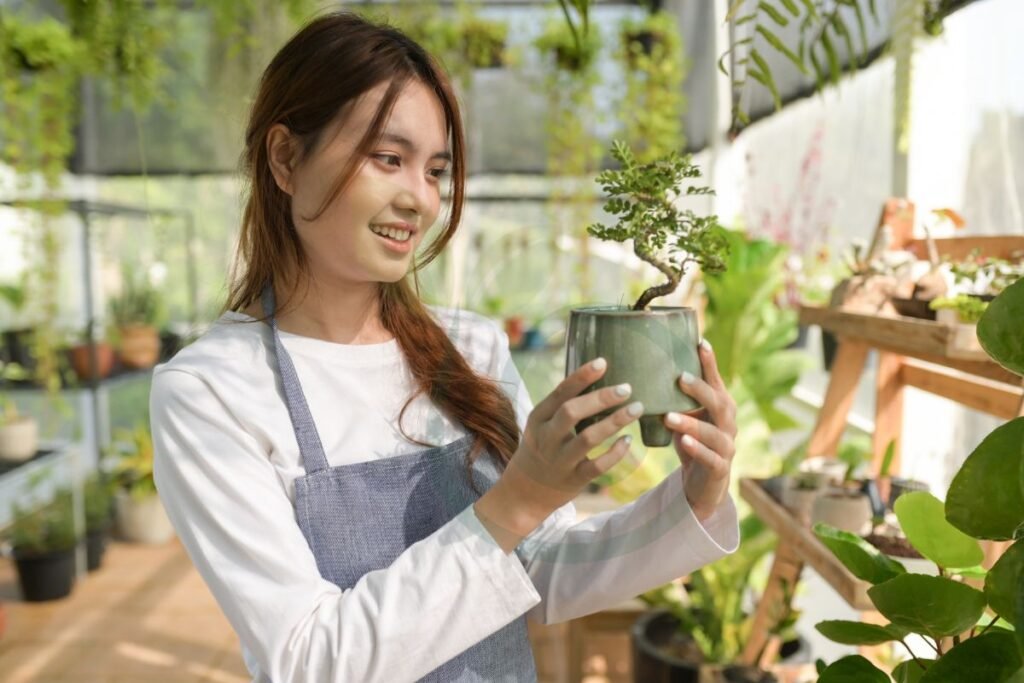
Watering Essentials
Watering is crucial. These miniature trees, often depicting trailing branches below the pot rim, require meticulous care to maintain their form. The watering frequency depends on factors such as the tree species, pot size, and soil composition. It's essential to water when the soil starts to dry out but before it becomes bone dry. Overwatering can lead to root rot.
Lighting Needs Bonsai trees grown indoors have specific lighting needs for optimal health. Adequate light is crucial for their growth and development. Finding a balance between moist and dry soil conditions is vital as overwatering can be detrimental to these delicate plants.
Temperature Control Maintaining an ideal temperature environment for indoor bonsai trees is essential for their well-being. Direct sunlight exposure for several hours daily may be necessary depending on the species of bonsai tree being cultivated indoors.
Pruning Practices Moderate temperatures are generally preferred by most types of bonsai trees grown indoors. It's important to protect them from extreme heat or cold conditions that could negatively impact their growth and overall health.
Growth and Maintenance
Repotting Frequency
Bonsai trees indoor require repotting every two years, which ensures the roots have enough space to grow. When the roots start circling around the pot's bottom, it's time for a larger container.
Repotting helps refresh the soil and prevents root-bound conditions. It also allows you to prune some of the roots, promoting healthy growth.
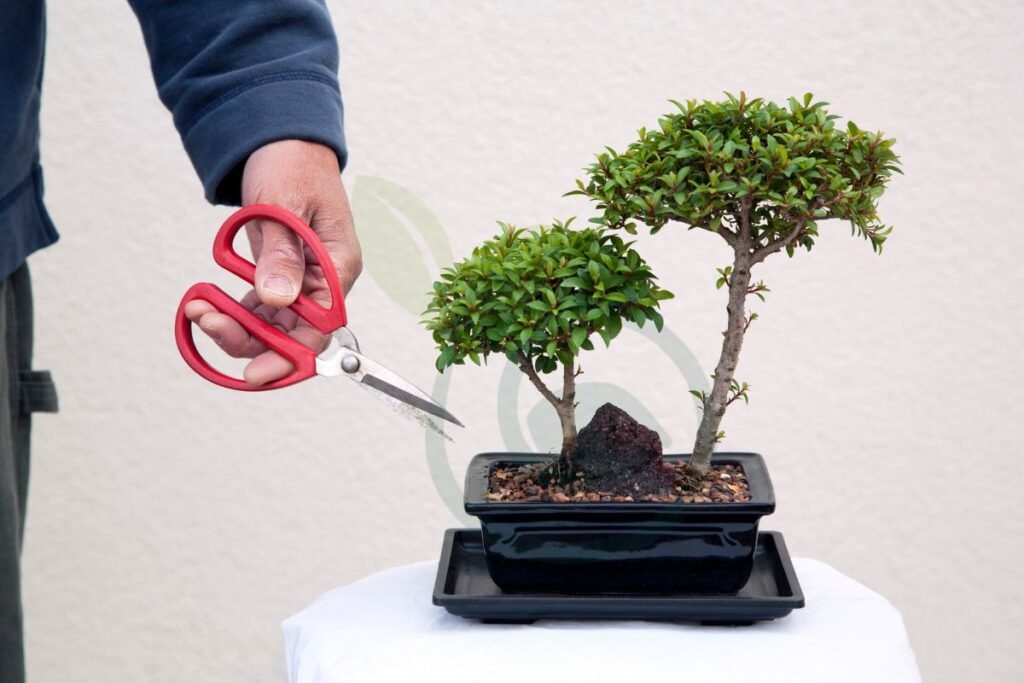
Soil Composition
The types of bonsai trees indoor thrive in well-draining soil that retains moisture. A mix of akadama, pumice, and lava rock provides excellent drainage while retaining essential nutrients.
This composition ensures proper aeration and water retention necessary for healthy root development. It also supports overall plant health by preventing waterlogged conditions.
Fertilization Schedule
Regular fertilization is crucial for maintaining the health and vigor of indoor bonsai trees. During growing seasons (spring through fall), apply a balanced liquid fertilizer every two weeks to promote robust growth.
Fertilizers rich in nitrogen support leafy growth, while those high in phosphorus encourage strong root development. Adjusting your fertilization schedule based on seasonal changes is key to nurturing healthy plants.
Pest Management
Pests can pose a threat to bonsai trees grown indoors, so regular inspection is vital for early detection. Common pests include aphids, spider mites, and scale insects that can damage foliage or weaken the tree's overall health.
Using organic insecticidal soap or neem oil spray effectively controls these pests without harming your plant. Maintaining good airflow around your tree discourages pest infestations.
Common Challenges
Overwatering Issues
Overwatering is a common issue when caring for indoor bonsai trees. It's essential to allow the soil to partially dry out between waterings. One way to avoid overwatering is by checking the moisture level of the soil before watering again. If the top inch of soil feels dry, it's time to water.
Another method to prevent overwatering is by using a well-draining soil mix and ensuring that the pot has drainage holes at the bottom. This allows excess water to escape, preventing root rot and other issues caused by soggy soil.

Insufficient Light
Indoor bonsai trees require an adequate amount of light for healthy growth. Lack of sunlight can lead to weak, spindly growth and overall poor health in bonsai trees. To address this challenge, consider placing your bonsai near a south-facing window where it can receive ample sunlight throughout the day.
If natural light is limited in your home, supplemental grow lights can be used to provide additional illumination for indoor bonsai trees. LED or fluorescent grow lights are suitable options that can help meet their light requirements.
Humidity Control
Maintaining proper humidity levels is crucial for indoor bonsai trees, especially during winter when indoor air tends to be drier due to heating systems. One way to increase humidity around your bonsai tree is by using a humidity tray filled with water and pebbles underneath the pot.
Misting your bonsai tree's leaves occasionally can also help raise humidity levels around the plant without overwatering its roots. However, it's important not to rely solely on misting as it may not provide sufficient moisture in drier conditions.
Seasonal Adjustments
Seasonal changes affect how you care for indoor bonsai trees too; they have different needs during each season. For example, during summer months, you may need more frequent watering due to increased evaporation rates from higher temperatures.
In contrast, during winter months when daylight hours are shorter and indoor heating reduces humidity levels further, you might need less frequent watering but more attention towards maintaining appropriate humidity levels through methods like humidifiers or pebble trays.
Bonsai Tree Selection
Size and Space
When choosing types of bonsai trees indoor, consider the available space in your home. Some bonsai tree species are better suited for small spaces, like apartments or offices, while others require more room to thrive. For example, a compact Ficus Retusa is ideal for limited spaces, whereas a Chinese Elm might need more breathing room.
It's important to note that certain tree species can adapt to different environments with proper care and maintenance. So, if you have limited space but desire a specific type of bonsai tree, research its adaptability to confined areas.
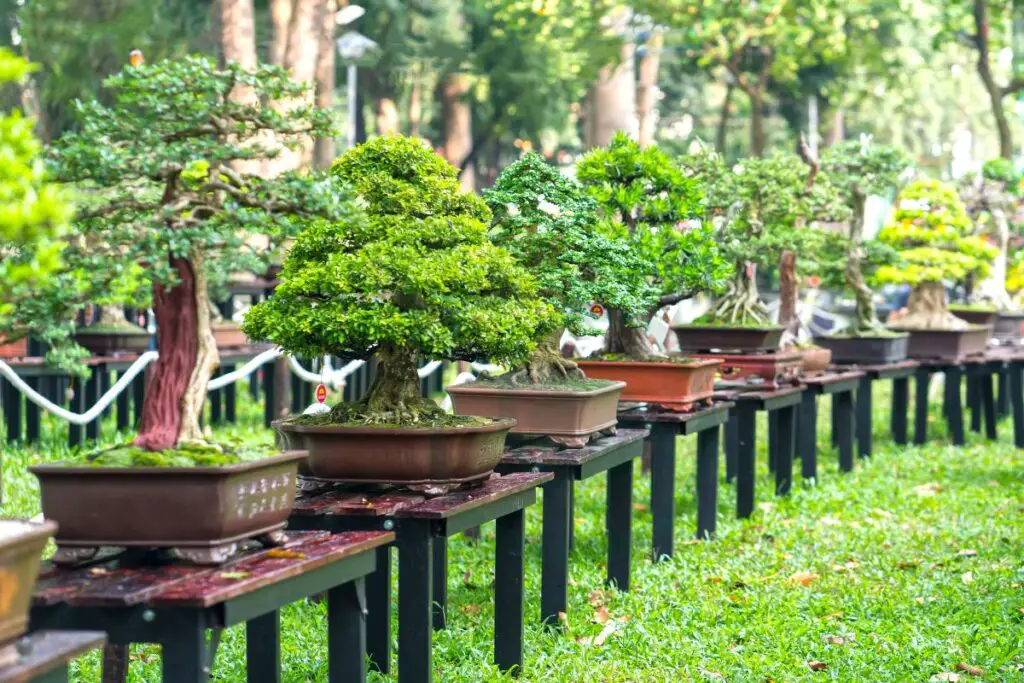
Consider the size of the matured plant as well. While some bonsai trees may start small, they can grow significantly over time. Therefore, it's crucial to anticipate their potential growth and ensure that your living space can accommodate them in the long run.
Longevity and Health
Different types of bonsai trees have varying lifespans based on their species and how well they are cared for. For instance, junipers are known for their longevity when properly nurtured; however, delicate varieties like Azaleas may require extra attention to maintain good health.
Before selecting an indoor bonsai tree, assess your commitment level toward its care routine. If you're new to caring for plants or have a busy schedule, opt for hardy varieties such as Jade Plants or Ficus Ginseng that are resilient and easier to maintain.
Furthermore, consider the environmental conditions within your home—such as humidity levels and sunlight exposure—that would impact the health and longevity of your chosen bonsai tree species. Some trees thrive in bright light while others prefer shaded areas; understanding these preferences will contribute greatly to their overall well-being.
Cost and Availability
The price range for different types of indoor bonsai trees varies widely based on factors such as age, rarity of the species, aesthetic appeal (like twisted trunks), pot quality (ceramic vs plastic), among other considerations.
Pros:
- A diverse selection allows you to find an affordable option within your budget.
- The availability of various sizes offers flexibility in cost depending on personal preference.
Cons:
- Rare or exotic specimens may come with a hefty price tag due to their scarcity.
- Larger or older bonsais tend towards being pricier due to extended cultivation periods.
Visual Showcase
Ficus Varieties
Ficus varieties are a popular choice. They thrive in both natural and artificial light, making them perfect for any room in your home or office. The Ficus Retusa, also known as the Banyan Fig, is a great option for beginners due to its forgiving nature. It can tolerate occasional missed waterings and adapts well to different environments.
Ficus Ginseng is another stunning variety that features aerial roots growing down into the soil, creating an intricate and captivating appearance. Its thick trunk adds an element of age and character to any space where it's displayed. This type of ficus prefers bright, indirect light and should be placed near a window for optimal growth.
Succulent Bonsai
Succulent bonsai trees are an excellent choice for those looking for low-maintenance indoor plants with unique visual appeal. These bonsai trees belong to the category of xerophytes, meaning they can survive in arid conditions by storing water in their leaves or stems. Jade plant (Crassula ovata) is one such succulent species commonly used for bonsai cultivation due to its resilience and striking appearance.
Another popular succulent option is the Portulacaria afra, also known as Elephant Bush or Spekboom. This variety has small round leaves that add charm to any indoor setting while requiring minimal care. Both Jade plant and Portulacaria afra thrive in bright sunlight but can adapt well even if placed away from direct sun exposure.
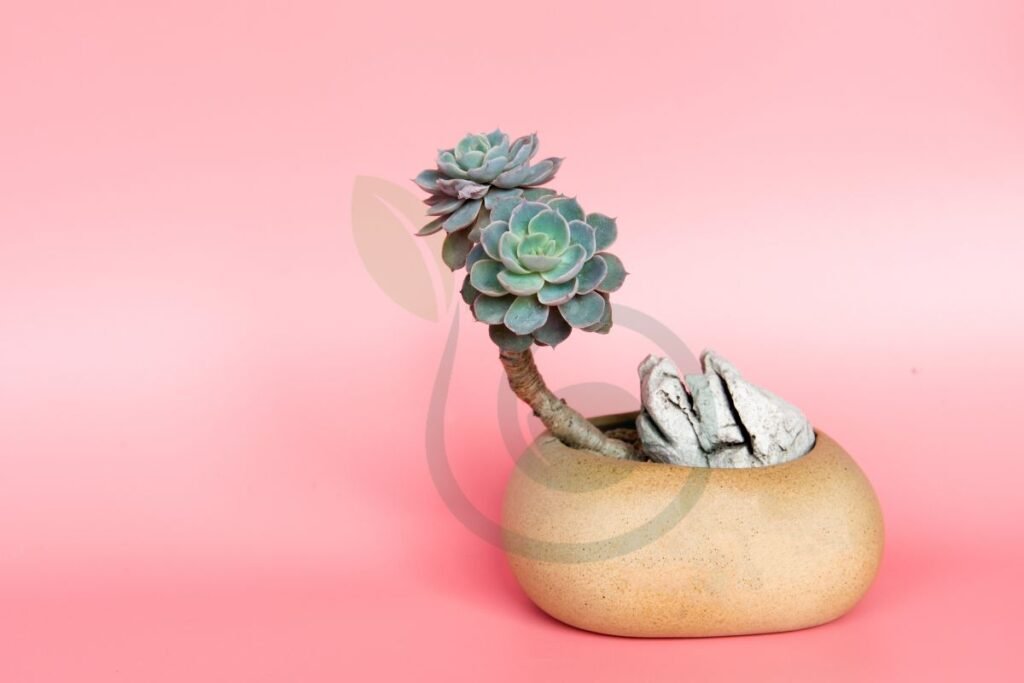
Evergreen Options
For a timeless touch of greenery indoors, evergreen bonsai trees offer enduring beauty throughout the year without shedding their leaves seasonally. The Juniper Procumbens Nana stands out as a classic choice among evergreen species suitable for indoor cultivation due to its compact form and needle-like foliage reminiscent of full-sized conifers.
The Chinese Elm (Ulmus parvifolia) represents another beloved evergreen species often trained into elegant bonsai forms suitable for indoor display purposes. With proper care involving adequate sunlight exposure near windowsills or under grow lights during winter months, these evergreens will maintain their lush appearance all year round.
Accessorizing Your Bonsai
Pots and Containers
There are various options to choose from. Consider the size of your bonsai tree and its root system. A pot that is too large can retain excess water, leading to root rot, while a small pot may constrict growth. The material of the container matters. Porous materials like unglazed clay allow for better airflow to the roots, aiding in moisture regulation.
Select a pot or container that complements the aesthetic of your bonsai tree. For instance, if you have a traditional Japanese maple bonsai, opt for an elegant ceramic pot with intricate designs. On the other hand, if you have a tropical ficus bonsai, consider a simple yet modern-looking container.
Consider adding decorative elements around the base of your indoor bonsai tree as well.
Decorative Stones
Decorative stones can enhance the visual appeal of your indoor bonsai display while also serving practical purposes. Placing small pebbles or rocks on top of the soil helps prevent soil erosion when watering and provides stability to young trees with underdeveloped root systems.
You can also use decorative stones to create visually appealing landscapes within shallow pots or trays for certain types of miniature trees such as junipers or pines. For example, arranging smaller stones around a tiny juniper creates an illusion of a rocky mountain terrain surrounding the tree.
In addition to enhancing aesthetics and functionality, these decorative elements contribute to creating harmonious compositions in line with traditional Japanese gardening principles like "wabi-sabi."
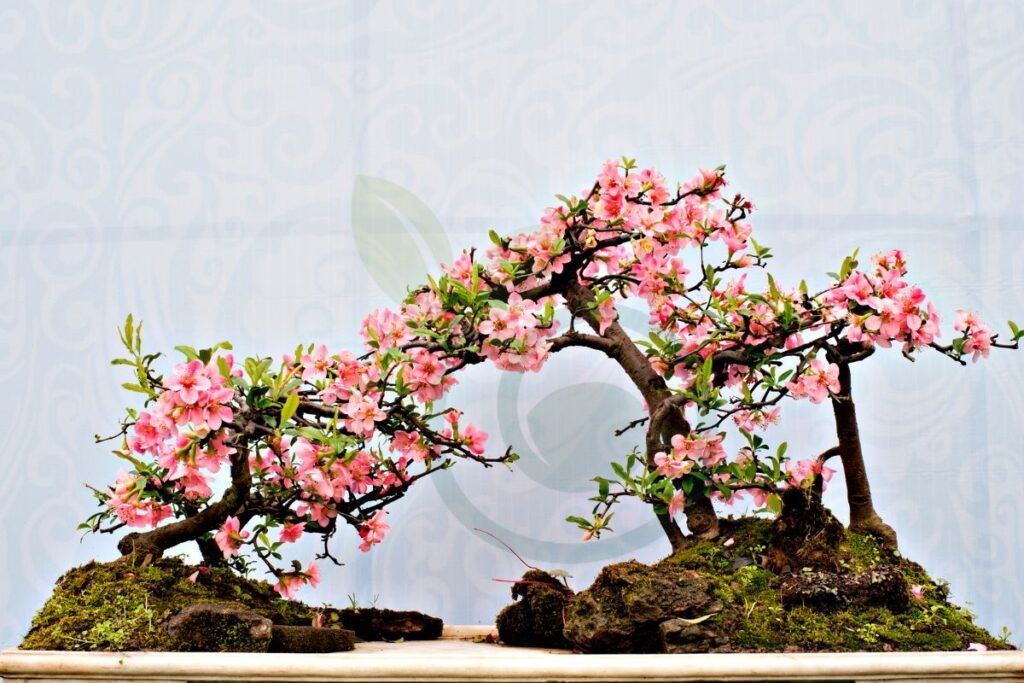
Companion Plants
Introducing companion plants into your indoor bonsai display can add diversity and interest while promoting overall plant health through natural symbiotic relationships between species. Select companion plants that thrive in similar light and humidity conditions as your specific type of bonsai tree.
For instance:
- If you have a flowering cherry blossom bonsai (sakura), consider pairing it with low-growing ground covers like mosses or ferns.
- For tropical species such as ficus or schefflera varieties, incorporating air-purifying plants like spider plants or peace lilies can help maintain air quality indoors while complementing their vibrant foliage.
Advanced Indoor Bonsai Types
Satsuki Azalea
Satsuki Azalea is a popular indoor bonsai tree known for its stunning flowers. These trees are native to Japan and come in various flower colors, including pink, red, white, and purple. They require ample sunlight and consistent watering to thrive indoors. The Satsuki Azalea is favored by many bonsai enthusiasts due to its vibrant blooms that add a touch of elegance to any indoor space.
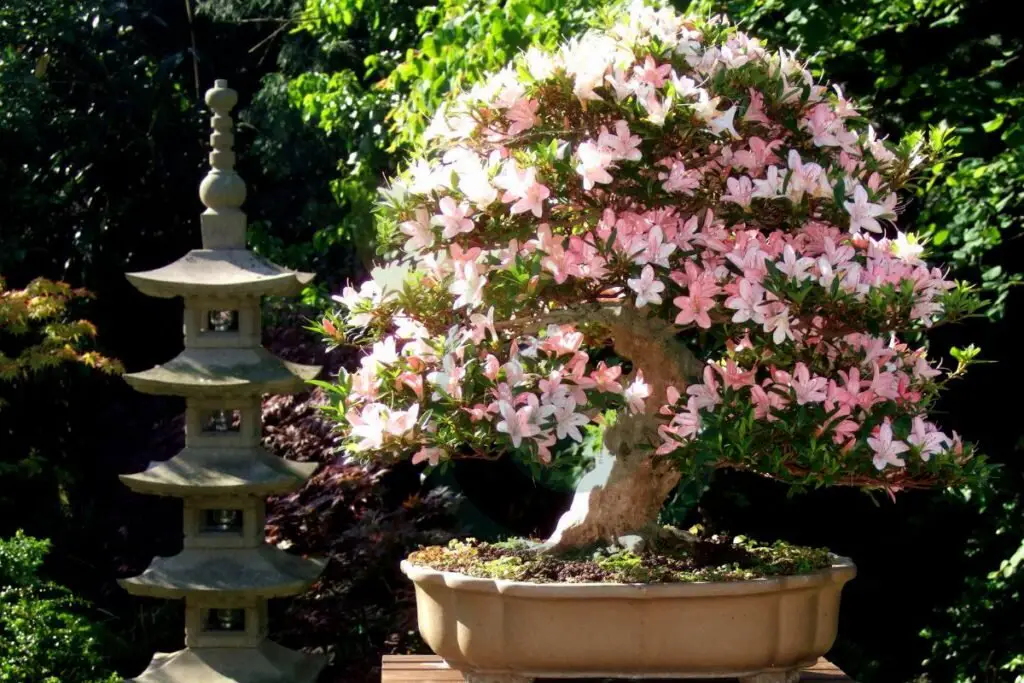
Growing Satsuki Azalea as an indoor bonsai requires attention to detail regarding temperature and humidity levels. These trees prefer cool temperatures during the winter months but need protection from frost. Maintaining high humidity levels is crucial for their overall health and blooming cycle. It's essential to place a water tray filled with pebbles beneath the tree or use a humidifier to create the ideal environment for your Satsuki Azalea.
Hawaiian Umbrella
The Hawaiian Umbrella bonsai tree, also known as Schefflera Arboricola, is prized for its lush green foliage and unique umbrella-shaped canopy. This tropical plant thrives indoors when provided with bright indirect light and regular pruning to maintain its compact size. Its small leaves make it an excellent choice for those looking for a visually appealing indoor bonsai without requiring extensive space.
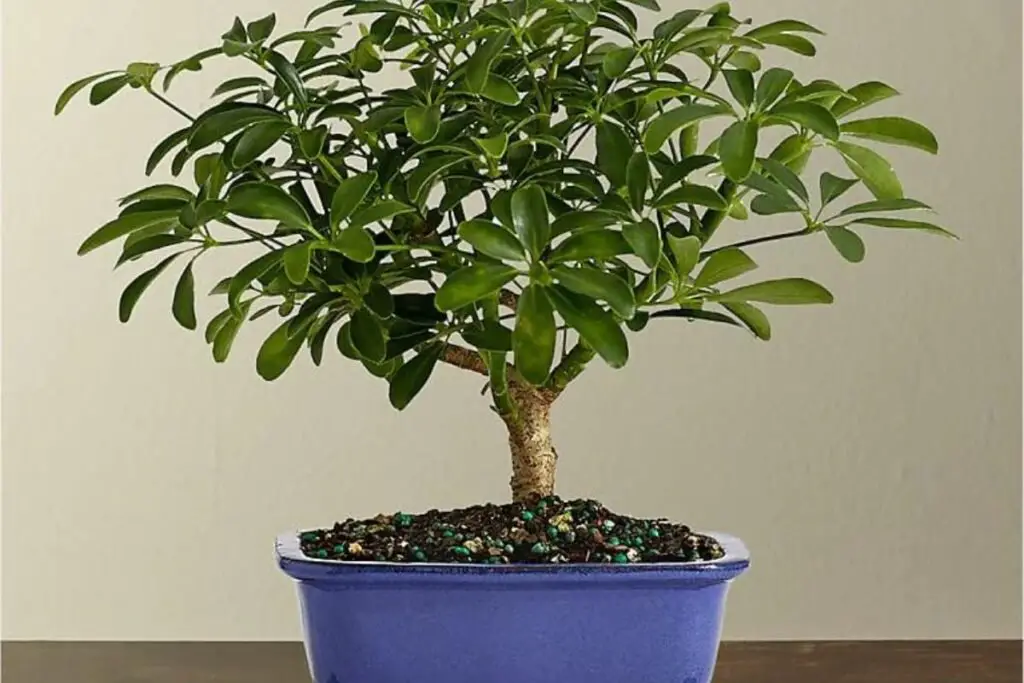
When caring for Hawaiian Umbrella bonsai trees indoors, it's crucial to monitor their watering needs closely. These plants prefer slightly moist soil but can suffer if overwatered or allowed to dry out completely between waterings. Furthermore, periodic fertilization during the growing season helps promote healthy growth while ensuring that the plant receives essential nutrients.
Serissa Foetida
Serissa Foetida, commonly referred to as Snowrose or Tree of a Thousand Stars, is another exquisite type of indoor bonsai characterized by delicate white flowers and tiny dark green leaves. Native to Southeast Asia, this species thrives in warm indoor environments with plenty of natural light but should be shielded from direct afternoon sun exposure.
When cultivating Serissa Foetida as an indoor bonsai tree, it's important to pay close attention to pest control due to their susceptibility to infestations such as spider mites or aphids. Regularly inspecting the foliage and treating any signs of pests promptly will help maintain the health and vitality of these beautiful specimens.
Summary
You've now got the lowdown on different types of indoor bonsai trees, from the basics and ideal types to care, maintenance, and common challenges. Whether you're a beginner or a seasoned bonsai enthusiast, there's something for everyone in the world of indoor bonsai. So, go ahead, pick the perfect bonsai that speaks to you, adorn it with accessories, and watch it thrive with your tender loving care.
Ready to bring nature's miniature marvels into your indoor space? Get your hands dirty, embrace the art of bonsai, and let these little trees add a touch of zen to your surroundings.
Frequently Asked Questions
What are the basic requirements for growing indoor bonsai trees?
To grow healthy indoor bonsai trees, you'll need to consider factors like adequate sunlight, proper watering and drainage, suitable soil mix, and regular pruning. It's also important to maintain a consistent environment with appropriate humidity levels.
How can I choose the right type of bonsai tree for indoors?
When selecting an indoor bonsai tree, consider factors such as available space, lighting conditions in your home, and your level of experience with bonsai care. Some popular options for indoor cultivation include Ficus, Jade, Chinese Elm, and Ginseng Ficus.
What are some common challenges in caring for indoor bonsai trees?
Common challenges when caring for indoor bonsai trees include maintaining optimal humidity levels, preventing pests and diseases through proper ventilation and cleaning practices. Ensuring that the tree receives sufficient light while avoiding direct exposure to harsh sunlight is crucial.
How often should I water my indoor bonsai tree?
The frequency of watering your indoor bonsai tree will depend on various factors such as the species of the tree, environmental conditions within your home (e.g., temperature), pot size relative to root mass. Generally speaking though it is advisable not to overwater or underwater but instead check moisture levels regularly.
Can I incorporate decorative elements into my indoor bonsai display?
Yes! Accessorizing your indoor bonsais can enhance their aesthetic appeal by using complementary elements like miniature figurines or small decorative stones placed around the base of the tree. Just ensure that these accessories do not hinder airflow or impede necessary maintenance activities.
Image Source: Paid image from CANVA

